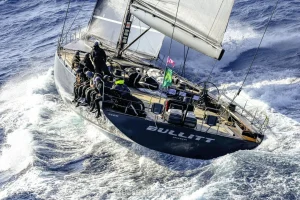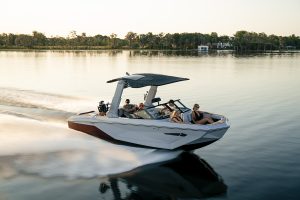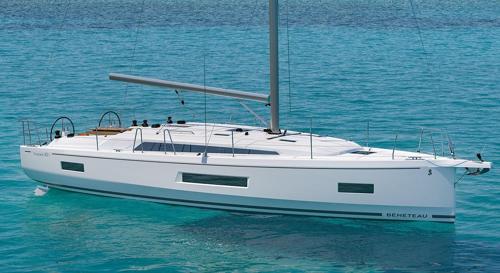Cruising Sailboats Ultimate Guide: Expert Tips for Smooth Sailing
Cruising sailboats offer the perfect combination of comfort, durability, and adaptability for those seeking a life on the water. These versatile vessels are designed for extended voyages, providing the necessary features and accommodations to make long-distance sailing not just possible, but enjoyable as well.
In this ultimate guide to cruising sailboats, readers will gain insight into the different types of cruising sailboats available, their distinguishing characteristics, and the factors to consider when choosing the ideal vessel for their specific needs. From affordable options and popular models to the essential equipment and skills required for successful bluewater cruising, this guide aims to equip aspiring sailors with the knowledge needed to embark on their seafaring journey.
Sailing enthusiasts have a wide variety of cruising sailboats to choose from, with some popular models including the Contessa 32, Pacific Seacraft 34, and Valiant/Esprit 37. Taking into account factors such as budget, desired destinations, and personal preferences, this guide will provide a comprehensive overview of the cruising sailboat market and the best practices for selecting and maintaining a seafaring home-away-from-home.
History of Cruising Sailboats
The history of cruising sailboats can be traced back to the early days of sailing, but it was in the mid-20th century that saw significant advancements in design and technology. With the advent of fiberglass hull materials in the late 1940s and 1950s, sailboats became more durable and affordable, marking a new era in sailing history (Cruising World).
In the initial years, sailboat designs emphasized comfort and practicality over performance. The Cruising Club of America (CCA) rules played a significant role in shaping mid-sized and full-sized yachts, promoting all-around boats with moderate beam and long overhangs. These designs ensured that race boats prioritized comfortable and functional living spaces for their crew (Cruising World).
As the demand for cruising sailboats increased, designers and builders began experimenting with new hull shapes and materials. In the 1970s, designers like Robert H. Perry, Harwood Ives, Scott Sprague, and Tommy Chen collaborated to produce innovative designs for sailboats, including the well-known Hans Christian Yachts (Wikipedia). These boats aimed to combine aesthetics, safety, and performance, appealing to a broader range of sailors.
Into the 1980s and 1990s, cruising sailboats continued developing, with designers focusing on creating the "ultimate cruising sailboat" (Wikipedia). This period also witnessed the popularity of the Tayana Vancouver 42, designed by Robert Harris, and remained a key choice for serious cruisers (Cruising World).
Today, cruising sailboats are designed for various purposes, including bluewater cruising, coastal cruising, and day-sailing. Modern sailboats, such as the 2022 Jeanneau Sun Odyssey 380, offer a range of features catering to couples and families who wish to enjoy their time on the water (YachtWorld). With numerous innovations and improvements over the decades, cruising sailboats have come a long way since their early days.
Types of Cruising Sailboats
Cruising sailboats are designed for sailors who want to live aboard while sailing and exploring various ports of call. There are several types of cruising sailboats, each with its own features and characteristics to suit different needs and preferences.
1. Sloop: Sloop-rigged sailboats have one mast and two sails, a mainsail and a headsail. They are generally faster and more maneuverable than ketch-rigged boats. They are popular among cruisers because of their simplicity and performance capabilities. (source)
2. Ketch: Ketch-rigged cruising sailboats have two masts and four sails, providing more stability and ease of sailing. They may not be as fast or maneuverable as sloops but offer better balance and versatility, especially for long-distance cruising. (source)
3. Cutter: A cutter sailboat has a single mast, mainsail, and two headsails. It is similar to a sloop but offers better sail balance and flexibility in various wind conditions. This setup can be advantageous for cruising in changeable weather conditions.
4. Catamaran: Catamarans have two hulls, offering stability and spacious living areas for their size. They have become increasingly popular among cruising sailors for their comfort, speed, and shallow draft, allowing them to access remote anchorages. (source)
5. Trimaran: Trimarans are comprised of a main hull and two smaller outer hulls, providing stability and speed. They are less common than catamarans but still offer many of the same benefits for cruising.
In addition to these main types, there are other variations like pocket cruisers, motorsailers, and shoal-draft vessels that cater to specific requirements and preferences of the cruisers. (source)
Essential Sailboat Features
When choosing a cruising sailboat, it is important to consider several essential features that make the sailing experience enjoyable, safe, and efficient. In this section, we will discuss the key elements to look for in a cruising sailboat.
First and foremost, a well-designed sailboat should have a suitable rig. There are two common types of rigs - sloop and ketch. Sloop-rigged boats have one mast and two sails, which make them faster and more maneuverable, while ketch-rigged boats are typically more stable and easier to sail due to their two masts and four sails (Ocean Wave Sail). The choice between the two depends on the preferences and needs of the sailor.
Another important feature is the boat's interior layout. Comfort and functionality are essential when spending time on a cruising sailboat. Look for well-planned spaces with sufficient storage, comfortable sleeping arrangements, a well-equipped galley, and easy navigation between compartments.
Good ground tackle is an essential component of a cruising sailboat. Having three different types of anchors can provide security and a good night's sleep while anchoring in various bottom conditions like sand, mud, rock, kelp, or grass (Boats.com). In addition, a reliable windlass system can make handling ground tackle an easier task.
Safety equipment, such as lifejackets, life rafts, distress flares, and navigation lights, are essential for any sailboat. Ensure that your boat is equipped with up-to-date safety gear and that all passengers are aware of its usage and location.
Finally, consider the boat's instrumentation and navigation features, such as GPS, chart plotters, and autopilot systems. These tools can significantly enhance the sailing experience, reducing the chance of errors and making it easier to stay on course.
Selecting the Right Sailboat
Selecting the right cruising sailboat involves considering various key factors that suit the type of sailing you plan to do. This will ensure a comfortable and enjoyable experience on the water. In this section, we will discuss the aspects that should be taken into account when choosing a cruising sailboat.
First and foremost, the intended purpose of the sailboat should be a primary consideration. For coastal sailing, a smaller and more nimble boat is recommended, as it is easier to handle in such conditions (source). On the other hand, for bluewater cruising or ocean sailing, a larger and more robust boat is necessary for increased safety and comfort during extended voyages.
Another crucial factor when selecting the right sailboat is the size of the boat. Beginners are advised to start with a smaller sailboat, as these are generally easier to manage and learn on (source). However, as skills and confidence develop, sailors may opt for a larger boat that offers more amenities and space for longer trips.
Budget plays a significant role in the sailboat selection process. Options for cruising sailboats range from affordable entry-level boats to high-end luxury models. Consider both the initial purchase price and ongoing maintenance costs when determining the right sailboat for your needs.
Finally, the design and construction of the sailboat should not be overlooked. Factors such as hull shape, rig type, and the interior layout can greatly impact the overall sailing experience. Take the time to research various sailboat designs and consult with experienced sailors to find the ideal boat for you.
Maintenance and Safety
Regular maintenance and adherence to safety guidelines are crucial factors to ensure a smooth sailing experience on your cruising sailboat. Keeping your boat and sails in top condition not only ensures a safe journey but can also save you time and money in the long run.
Start by creating a maintenance schedule, organized into preseason, mid-season, and post-season tasks. This will help you address any required services and ensure timely maintenance of your sailboat's components. Quantum Sails recommends creating a task checklist to guide you through this process.
Some essential tasks to consider include:
- Inspecting the boat's hull, looking for any signs of leaks or damage
- Checking the bilge pump for smooth operation
- Monitoring battery levels regularly
- Examining raw-water sea strainers periodically
When it comes to safety, ensure that your sailboat is equipped with the necessary safety gear. Items such as personal flotation devices (PFDs) for each person onboard, visual distress signals, a bell, and/or a whistle, and fire extinguishers are required for most U.S. sailboats, as noted on ImproveSailing. Additional ventilation ducts may be necessary for closed fuel or engine compartments.
Preparation Tips
| Task | Benefit |
|---|---|
| Flare Kit Inspection | Ensure flares are not expired and are stored in a dry, accessible location. |
| Life Raft Check | Confirm that the life raft is in working order and that it has been serviced according to the manufacturer's recommendations. |
| First Aid Kit Update | Make sure your first aid kit is well-stocked and that all items are within their expiration dates. |
While sailing, it's essential to remain vigilant and informed about the weather conditions and rules of the water. Consider enrolling in a sailing course or seminar to stay up-to-date on sailing best practices and enhance your competence out at sea.
Outfitting Your Sailboat
Preparing your sailboat for cruising requires careful consideration of essential equipment and systems that ensure a safe and enjoyable voyage. Selecting the right gear not only enhances your sailing experience but also contributes to the overall safety of the vessel and crew.
When outfitting your sailboat, start by investing in quality navigation electronics, such as a reliable GPS system, chartplotter, and VHF radio. Ensuring accurate positioning and communication is crucial, especially during long voyages or in challenging weather conditions. Automatic Identification Systems (AIS) are also valuable additions, as they assist in tracking and avoiding collisions with nearby vessels.
Another key aspect of outfitting a sailboat is the selection of appropriate safety gear. This includes life jackets, lifelines, life rafts, flares, EPIRBs (Emergency Position Indicating Radio Beacons), and throwable flotation devices. Regular inspection and maintenance of these safety items are vital to ensure their effectiveness during emergencies.
Sail handling and control equipment should also be prioritized. Opt for sturdy and reliable gear, such as winches, clutches, and blocks. Properly inspected and maintained rigging will contribute to efficient sail management, easing the overall sailing experience.
Maintaining reliable power sources on board is essential for both navigation and daily living. Invest in efficient solar panels or wind generators to keep your batteries charged and provide energy for various on-board appliances.
Finally, consider outfitting your sailboat with quality ground tackle for secure anchoring during your cruising adventure. A dependable anchor, anchor chain, and windlass will help ensure your boat remains secure while at anchor, providing peace of mind while exploring new destinations.
In summary, outfitting a cruising sailboat requires careful planning and investment in high-quality equipment. From navigation and safety gear to sail handling and power systems, selecting the right components will ensure a safe and enjoyable cruising experience.
Cruising Destinations
The Caribbean is among the most popular cruising destinations in the world, attracting North Americans, Europeans, Australians, and others to enjoy its sunny shores and crystal-clear waters. The Leeward Islands, in particular, offer vibrant reefs, lush scenery, and a laid-back atmosphere which greatly appeal to sailors (Cruising World). Many cruisers make their way to the Caribbean after purchasing sailboats in other parts of the world (Wander By Sail).
Another top cruising destination is the Mediterranean, which is often visited in conjunction with the Caribbean. Sailors frequently follow offshore sailing routes between these two regions during the ideal cruising period for the Mediterranean, which varies based on factors like weather and personal preferences (Sail and Prop). Cruisers often prefer the destination for its rich history, diverse cultures, delicious cuisine, and picturesque landscapes.
In the South Pacific, options for off-season cruising destinations include Australia and New Zealand. While cruising opportunities in this region may be limited in 2021 due to the ongoing global pandemic, these destinations offer unique experiences, stunning natural beauty, and opportunities for exploration and adventure (Cruising World).
When selecting the ideal cruising sailboat for these destinations, consider factors such as sailing capabilities, comfort, and budget. One example of a bluewater cruising capable vessel is the 2022 Jeanneau Sun Odyssey 380 sailboat, which has a base price of $237,000 and is a suitable candidate for couples and families looking for day sails or extended coastal cruising excursions (YachtWorld).
Budget and Expenses
While cruising on a sailboat, it's vital to have a comprehensive understanding of the budget and expenses involved. The expenses can be divided into a few major categories such as sailboat cost, maintenance, mooring or anchoring, provisions, and fuel.
Firstly, the cost of purchasing a sailboat varies significantly based on factors like the size, age, and type of the vessel. New sailboats can have an average price of $250,000, while used sailboats average at around $111,000 (Improve Sailing) . It's essential to consider the initial investment and compare the options according to your preferences and sailing plans.
Once you own a sailboat, maintenance is an ongoing expense. The annual maintenance cost for most boats ranges from $2,000 to $3,000, and the total annual expenses can be between $3,000 to $7,000 (Improve Sailing) . Maintenance activities include repairs, fiberglass and resin supplies, and paint. Expect to budget around $1,000 per year for chemical supplies like fiberglass, resin, and paint (Life of Sailing).
Another expense is finding a place to moor or anchor your sailboat. Marinas charge fees, while anchoring may have its challenges, but is generally free of cost (The Home That Roams). On average, monthly marina costs can sum up to $339 (The Home That Roams).
For provisions, your budget will depend on your personal preferences for groceries, dining out, and other consumables. An example of monthly provisions average cost is around $449 (The Home That Roams).
Lastly, fuel expenses differ based on your sailing habits and the size of your boat. A monthly average fuel cost is roughly $103, which includes diesel, propane, and gas (The Home That Roams). Keep in mind that sailing can minimize fuel consumption, lowering this expense.
Cruising Lifestyle and Community
The cruising lifestyle is a unique and captivating experience that combines the thrill of sailing with the freedom to explore new destinations. A significant aspect of this lifestyle is the strong sense of community among fellow cruisers, characterized by camaraderie and a willingness to help each other. The decision to embark on a cruising adventure often involves a commitment to a simple, self-sufficient way of living that fosters strong bonds among those who share this passion.
One of the key elements of the cruising lifestyle is striking a balance between work and play. Maintenance is an essential aspect of boat ownership, with many cruisers dedicating their mornings to various tasks (Yachting Monthly). Major projects, such as lift-outs, often require meticulous planning and can incur considerable expenses. However, these challenges are offset by the immense satisfaction of exploring new horizons and forming lasting friendships within the cruising community.
Practical knowledge and resourcefulness are highly valued in this community, and cruisers frequently exchange tips and advice on various topics. Cruising Freedom offers an extensive guide on onboard lifestyle, which covers topics such as optimizing living spaces, managing provisions, and adjusting to a life at sea. This wealth of information equips new cruisers with the skills needed to enjoy a safe and fulfilling journey.
Finally, when choosing a cruising sailboat, it is essential to find a vessel that aligns with one's lifestyle, budget, and sailing capabilities. Several used cruising sailboats can be acquired for under $100,000, offering a more affordable entry into the world of sailing. Additionally, consulting reputable sources such as Yachting Monthly's recommended sailing books and cruising guides can provide invaluable insights into various aspects of the cruising lifestyle, from navigation and anchoring to regional points of interest.











